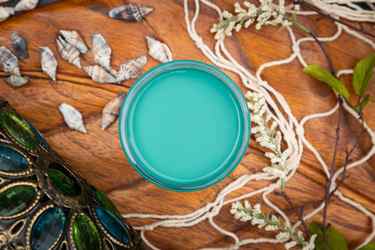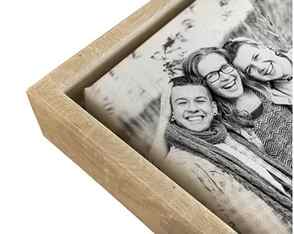Stephanie Hathaway Designs
Kansas City area artist and mama to two sweet little boys. I love to create practical, functional art inspired by nature.
*This post contains affiliate links. Thanks for your support!
Here’s a full list of all the art supplies I use. I listed them on Amazon for convenience but please note that the pricing and availability may vary. I also purchase from Michales or Blick.
For the most part, I allow my children to use my supplies. I’m not very picky and I’m a fan of using whatever you have on hand or is most accessible to you. That being said, I find that we have a more satisfying and enjoyable experience with the better quality supplies. This is particularly true with the paper. We always have a few pads of the Canson XL series on hand but my favorite is the Arches Cold Pressed Watercolor Paper.
This illustration took me about an hour to create. My son spent about 20 minutes on his.
We’ll be using the wet-on-wet technique for this illustration. Wet-on-wet is a painting technique where layers of wet paint are added to wet paper or a wash of wet paint.
STEP 1: Draw your circle. I used a compass but you can trace a round object. A small plate or CD is the perfect size.
STEP 2: Mix black paint with a bit of blue. Use a scratch piece of paper to test the color.
STEP 3: We’ll be using the wet-on-wet technique for this painting. Apply a wash of water to your entire circle. If you add too much water, simply dab with a paper towel to remove the excess water.
STEP 4: Load your brush with your gray paint mix and dab your brush on the wet paper to create your Moon’s craters. Notice how the paint spreads in an unpredictable pattern.
STEP 5: Use the same technique on the next layer, allowing time for the paper to dry slightly between layers.
STEP 6: Use less water with your paint as you go so each layer is a bit darker than the previous layer. I applied three or four layers of paint using this technique.
STEP 7: Use a tissue to lift excess paint or water. This is optional but I found that the loosely wadded tissue creates the perfect texture for our Moon’s surface.
STEP 8: Once you are happy with your Moon, use a more concentrated mix (less water) of paint to create depth along the edges of your craters.
STEP 9: Use a clean, dry brush to soften any edges that are too harsh. You can see that I’m also using my finger.
STEP 10: I used white gouache paint and colored pencils to add details to my painting. You can also use a white gel pen, paint pen, ink, or acrylic paint to add highlights. Using a fine tip brush, stroke on the gouache paint to create lunar crater rays and any other high points that stand out to me on my Moon reference photo.
STEP 10: As the paper dries, you’ll find you have more control over your paint and will be able to add more detail, well defined lines and sharp edges. Adding these details will create more depth in your illustration.
STEP 11: Once your painting is completely dry, you can add colored pencil to add more detail if you wish.
All done! I hope you enjoyed painting with me
I created a simple PDF of these instructions for your convenience. Download the instructions HERE.
How to Paint a Full Moon Watercolor Painting Tutorial
When you look up at the moon at night, do you want to stay in that moment forever? I love the light the moon seems to glow with and how it changes all the colors in the world to something different and hauntingly beautiful.
This watercolor painting tutorial is fun and very easy to do, since there’s so much splatter and scattering of paint. This one is meant to just be fun and at the end of it, you’ll have a luminous watercolor painting of a full moon at night!
I’ve always wanted to paint the moon. My husband took the photo with our 8″ Dobsonian telescope and an iphone held up to it over a year ago. I’ve had it in the back of my mind as something wonderful to paint ever since.
The moon is a particularly tricky subject in any medium as it’s basically black and white. Color is there, but very muted. Blood moons and harvest moons can be orange, but it’s really just grays floating in endless black space. I used the moon being a warmer color from the reflected light than the surrounding space and intensified the color quite a lot!
You’ll have a lot of fun with this painting. Splattering paint, scrubbing and water dropped on everything. It’s a very fun painting to do!

Painting Tutorial Level
14″ x 14″
Twinrocker Cold Press
Isabey Pointed Round Sable, no.14
Escoda Full Bellied Round Squirrel, no.14
M. Graham watercolors
Maroon Perylene
Nickel Azo Yellow
Pthalo Blue
Ultramarine Blue
Cobalt Violet
Painting Demonstration 1

I start with a loose wash of pthalocyanine blue and ultramarine blue in the night sky. I leave a few holes for stars, some of which I reserve with a wax crayon. I also reserve the whites of a few craters.
I start painting the moon with cobalt violet. I am letting the background bleed into the moon. The shadows and light on the moon are full of reflections, after all!
I took a lot of time drawing out the various features of the moon. It’s like a portrait – everyone recognizes the moon! While I start extremely loose, I do want to define those features fairly accurately later on.

Wonderful photo taken by my husband!
Can you believe this was with an iphone 4 just held up to the eyepiece? We really need to get some good telescope camera mounts!
Painting Demonstration 2

I let the night sky blur into the moon. I’ll go back and redefine it later!
I let this dry completely!
Painting Demonstration 3

I paint another layer on the night sky. The wax reserved areas are really starting to show up!
I use maroon perylene in the background to get a deep dark that’s still transparent. Burnt sienna would be too grainy and opaque.
Paint twice as dark as you think you need.
It will dry lighter!

Painting Demonstration 4

I’ve pulled out some of the color and blurred the edges. I want them less defined since it is such a bright object against something so bright.
I use cobalt violet and nickel azo yellow, with touches of pthalo blue to paint the craters. Everything is still very loose.
Painting Demonstration 5

Oh I had some fun pulling out paint with a clean wet rag here!
Always let the painting dry completely after you’ve scrubbed at it. Letting the paper dry completely is how you avoid damaging the paper so you can do more washes.
Painting Demonstration 6

Now I go back, doing more layers. This is a paint and wait to dry sort of painting with a LOT of washes.
I’m starting to define the craters a bit. Keep in mind the light direction when painting big holes. The almost black and white photo helps with that!
Painting Demonstration 7

After several layers of paint and wait to dry, I let it dry completely. Now it’s time to start pulling out big impact craters. I start with Copernicus, let that dry. The last crater I pull out with a clean wet brush is Tycho, since it rays across the surface cover everything else.
To purchase How to Paint a Full Moon original watercolor painting, please click!
How to Paint a Full Moon Final Watercolor Painting!
This was such a fun painting to paint! I love looking up at the moon at night. It’s always so awe-inspiring.
This was also a complicated painting, which is also always fun!
I’d like to add a side note of caution. I painted this on Twinrocker paper for a reason. Handmade paper stands up to washes and layering and scrubbing that mouldmade artist paper will not. This is why. Do not try to paint this on cheap paper. It simply won’t work. I highly recommend Twinrocker as the best paper I’ve ever used. At the very least, go for a 300# Arches or Saunders! Your painting will be so much better!
Some paintings you can get away with any old paper. Paintings with strong darks, lots of scrubbing, pulling out or more than 3 washes, cheap paper is not worth painting on. Cheap paper is perfect for sketching, practicing brush strokes or exploring your pigments. The right tool for the righ job makes life easier!
I hope this inspires you to paint the night sky! My next wish list on that is the Aurora Borealis, which I’ve never even seen! I’d love to see what paintings this inspires!
I’m taking next week off to work on my next big project!
Related Art Lessons
All Paintings, Images, Videos, Text and Website Design Copyright 2022 by Jennifer Branch.
All Rights Reserved.
No Image, Video, Text or Website Design may be used without my written, specific permission.




